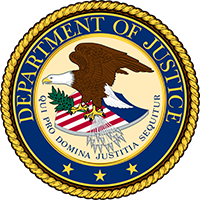 The History
The History
It has been over 30 years since the American with Disabilities Act (ADA) was signed into law. This critical piece of legislation changed the quality of life for millions of Americans by prohibiting discrimination on the basis of disability. Title II specifically applies to public entities (state and local governments, libraries, school districts and community colleges).
However, in 1990, when the law came into effect, nobody had any idea that the internet and digital materials would become such an integral part of everyday life and education. So, while the spirit of the ADA would apply to the digital world, there were no provisions to suggest how it should be covered.
In 1996, the Department of Justice did assert that the ADA did indeed apply to the internet but no technical standards were given so individual institutions were left to follow (or not) whatever requirements they felt were appropriate. This led to a lot of confusion, inaccessible materials, and a myriad of complaints by users who were unable to exercise their rights to freedom of access.
The New Rule
In August 2023, the Department of Justice announced their intention to establish technical accessibility standards for web and mobile applications for public entities – including Chemeketa under Title II of the ADA. WCAG 2.1 AA, an internationally-recognized set of standards established by the World Wide Web Consortium (W3C) was selected for the rule, and in April 2024, the Attorney General signed the new rule into law.
This rule applies to all web content and mobile apps that Chemeketa provides or makes available either “directly or through contractual, licensing, or other arrangements. This means that not only do the materials created by Chemeketa need to be accessible but any third party content or materials we get from publishers, developers, or OER sites must also be accessible.
The Rule establishes a timeline of Two Years – so Chemeketa will need to have all Digital Materials in compliance by April 24, 2026.
Taking Action
While two years is a relatively short timeline, it is very do-able. Just start with including accessibility when creating new documents – or substantially revising older documents as part of your standard process. If you make things accessible from the beginning, using the built in tools for Headings, lists, links and tables can actually save you time and adding alt-text takes only a minute (or three for more complicated things) if you add it along with the image itself.
Then, you can start triaging your other materials – work on them as you prepare for your upcoming courses as part of your usual prep for next term’s classes. By tackling just one document a day – or even just a couple a week, you will likely be able to get your courses into good shape well in advance of the deadline.
We Are Here To Help
Don’t worry – you are not in this alone! The Center for Academic Innovation (CAI) has you covered! We have many resources at your disposal and people to help get you started.
A great first place to start is our Aim for Accessibility Website which has simple steps you can take to make your materials more accessible – with information on why different best practices are important, tips and tricks on how to do it, and tutorials to take you step by step through the process. You can also find a handy checklist that you can print out as a one page “cheat sheet”
You also have access to a number of Accessibility Checkers that can help you along the way. These tools can help you to find and fix some of the most common accessibility errors and are a great way to get started on your accessibility journey. Just remember – Accessibility Checkers are limited – they can only check for a set of pre-programmed issues. For instance: it can tell if a picture has something in the alternative text field, but not if it is useful information. So take advantage of these awesome tools but please check things yourself as you are much smarter than any tool.
The CAI also offers quarterly workshops and other Professional Development opportunities on Accessibility and Inclusion and Heather Mariger, the Digital Accessibility Advocate and the rest of the CAI Faculty would be happy to meet with you to discuss any questions and offer help with your accessibility concerns at any time. So take a deep breath – we promise – you have this!
We look forward to working with you soon.
